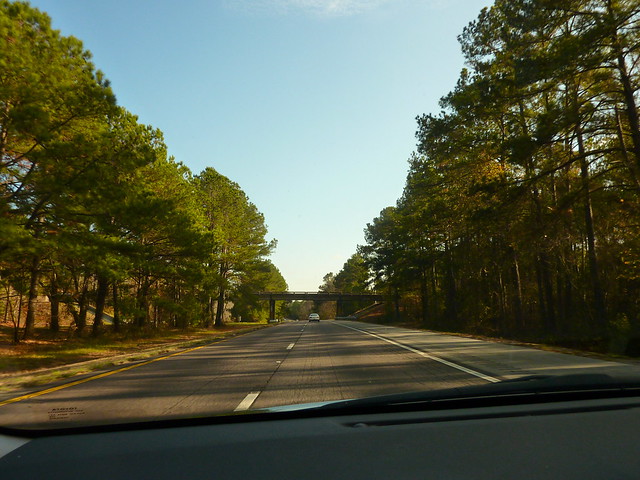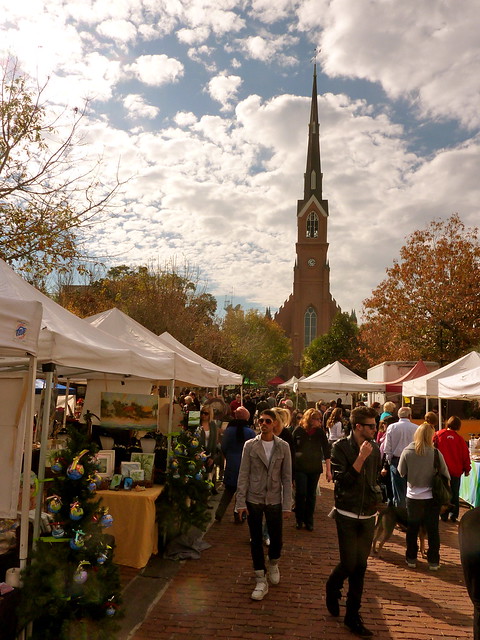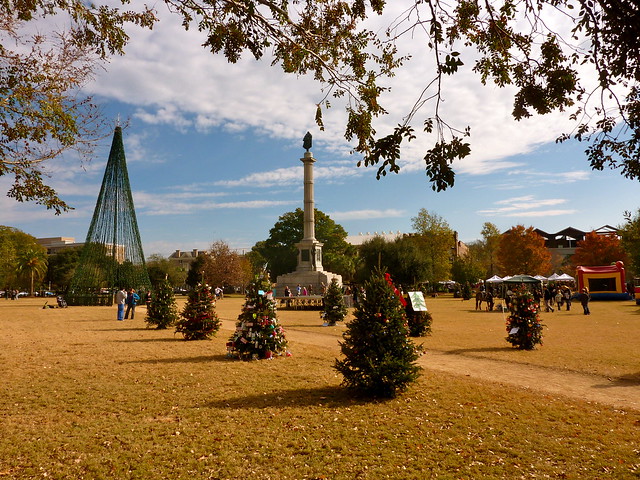Charleston (Part 1)
I spent Thanksgiving in Atlanta with close friends and relatives. We feasted properly, watched football, played a “Titanic Drinking Game”1, and had ourselves a merry time. It was nice to be with loved ones for a few days. I slept in a comfy bed, took long showers, and basically relaxed.
After a few days, I made plans to drive to Charleston, South Carolina. I rented a car and left the morning of Monday, November 29. The drive to Charleston was easy and peaceful - especially once I got onto I-26, which is mostly two lanes through occasional hills and lots of trees. It felt very good to drive.

My arrival in Charleston was more exciting than I had expected, because the rental car agency gave me a return location that - it turned out - was not accessible to civilians. So the guard at the armed gate of the Naval Weapons Station turned me away, and I found another return location nearby.
Notso Hostel
Charleston’s well-known hostel is downtown - about 3 miles from the coast. An enclave of three classic Charleston houses built in the 1840s, it was almost empty when I arrived (and has stayed nearly empty for the past two weeks). The weeks between Thanksgiving and Christmas are the slowest for tourism in Charleston. I had my 4-person room all to myself.
 Two of the three houses that make up Charleston’s Notso Hostel. My room - the “Cuba Room” - is on the first floor of the blue building.
Two of the three houses that make up Charleston’s Notso Hostel. My room - the “Cuba Room” - is on the first floor of the blue building.
Business Trip
I spent my first couple weeks in Charleston working on Sari Saheli. I began each day by walking to Hope and Union, where the coffee is great and the Internet is fast. But it closes at 7pm, when Mom - still in India - would still be asleep. So closing time at Hope and Union was my cue to get dinner and walk deeper into downtown, where there’s a Starbucks that stays open until 11pm. Then, after Starbucks closes and I end my workday, I would walk back towards the hostel - with a stop at Juanita Greenbeerg’s for beer and smalltalk. I found Kudu Coffee House a few days ago - open until 10pm - which has replaced Starbucks in the routine.
It’s interesting traveling to a new city and having such a routine. I felt neither like a traveller nor a local. I saw the same people each day, and they got used to seeing me, but we’ll forget each other soon. And when I walked back to the hostel, I didn’t relate to the other visitors either.
Historic Downtown
In the 1700s, Charleston was the hub of trade, culture, and commerce in the South. Known as the “Holy City”, it offered uncommon religious tolerance. Its status as the largest port in the southern United States brought it wealth and prosperity. And in the century between American independence and the end of the Civil War, it was a frequent battleground.
All of these influences can be seen clearly in a day’s walk around downtown. The city skyline is dominated not by skyscrapers or large office buildings, but rather by church steeples. Parks and libraries are dedicated to local war heroes - especially Francis Marion, whose green space in the middle of downtown is the site of the farmer’s market, the city’s large Christmas tree and ceremonies, and outdoor performances.
 Farmer’s Market at Marion Square
Farmer’s Market at Marion Square
 Christmas at Marion Square
Christmas at Marion Square
Charleston’s prosperity declined sharply after the Civil War2. But today it appears to thrive, as the local liberal arts college maintains a healthy influx of artists; and the beautiful surroundings and excellently preserved historic destinations attract tourists from all over the world. I found in my various sessions of eavesdropping that Charleston is full of people who are passionate about building their community.
-
You know - drink whenever someone says “unsinkable”, whenever emergency flares are fired, when the Celine Dion song plays, when the guy hits the propeller as he falls to his death, etc. Yes, this actually happened. As you might expect it was… awesome. ↩
-
The Emancipation Proclamation and the end of the Civil War marked the national freeing of slaves across the country. For Charleston, this meant that the labor force with which it had built its prosperity was no longer theirs to command. Charleston languished economically and culturally until the 1970s. ↩